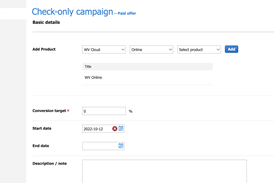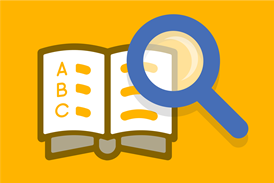All User guides articles – Page 15
-
User guides
Webvision Content API v1.0
The content API provides an interface to support the implementation of multiple non-Abacus applications.
-
User guides
Editorial and website menu administrator tasks
There are a number of important settings for the website that can be updated or amended by the system administrator or manager from the Editorial or Website menus.
-
 User guides
User guidesLanguage translations
Webvision Cloud can support multiple sites within the same CMS, each of which might be in a different language. The languages interface can be used to translate ‘fixed’ site furniture text, generated from template code, for sites in different languages.
-
User guides
Page aliases and redirects
The page alias functionality allows administrators to create alternative shorter URLs that may be used as published links and will automatically redirect to the full website URL. It can also be used to create 301 or 302 redirects.
-
User guides
Unlocking stories, navigation and users
Locks are applied in the CMS to prevent story or navigation content being edited simultaneously by different users. Additionally locks may be applied to users who have attempted to login using the wrong password multiple times. The locks page is available to system administrators to remove these locks.
-
 User guides
User guidesContent types
Types are a method of distinguishing content. When creating types, aim for a fairly short list of clear, generic descriptions rather than subject/topic names. Examples may be News, Features, Data, etc. Your site’s navigation is likely to be set up using a combination of Types and Categories. Type will be ...
-
User guides
Categories and taxonomy structure
Categories may perform a number of important functions on your website. Webvision categories can be multi-level. Your category tree should be designed to suit your website’s content and functional requirements.
-
User guides
Frequently used in-story links
Webvision provides functionality to semi-automate the creation of frequently used links. When a content creator is editing a story, they can view potential in-text links and select the appropriate match(es). This simplifies the editorial tasks behind creating link-rich content. This functionality may be used to create links to subject-related landing ...
-
User guides
Change tracking
The change tracking interface allows system administrators to view logs of key items that have been changed, by whom and when.
-
User guides
User activity reports
This area allows site managers to review site growth and CMS user activity over selected date ranges and by type of content. It also reports on the most commented content.
-
User guides
Campaign Monitor Integration - Version 3
This version includes the ability to use segments instead of lists, which can reduce costs. It also includes a new method for handling unsubscribe options.
-
User guides
Campaign Monitor Integration - Version 2
Create email campaigns by sending content from Webvision and users from ADvance.
-
User guides
Tracking Ad Blockers through GTM
This guide describes how to set up a tag in Google Tag Manager (GTM) to fire an Event to Google Analytics (GA) if a user has an ad blocker switched on, and the website is configured to measure this.
-

-
 User guides
User guidesEmail integration
Our default email integration is with Campaign Monitor. However, Webvision Cloud also supports integrations with Adestra, DotMailer, Maxemail, Adobe Campaign and Marketo.
-
User guides
Two-factor authentication (2FA) for Webvision Cloud
For increased security, the Webvision Cloud CMS uses two-factor verification in addition to username and password.
-
User guides
System users
System Users are back-end users of the Webvision Content Management System. System Users can be configured so that they have restricted access to different parts of the system. If there are multiple sites, users can have different access rights for each.
-
User guides
Administrator tasks
A number of system level CMS options are restricted to administrator or manager users. They include site defaults, creating users, change tracking, activity reports and language translations.
-
User guides
Understanding the use of page texts and default examples
Page text content is used to populate many different parts of the website – in particular advertising, and positions in templates where clients are likely to want to display variations of messaging suited to their particular audience.
-
User guides
Free-form template format – stories without story furniture
This format allows content to be displayed without the standard page furniture. This facilitates flexible presentation of content that is not necessarily suited to the story structure.











